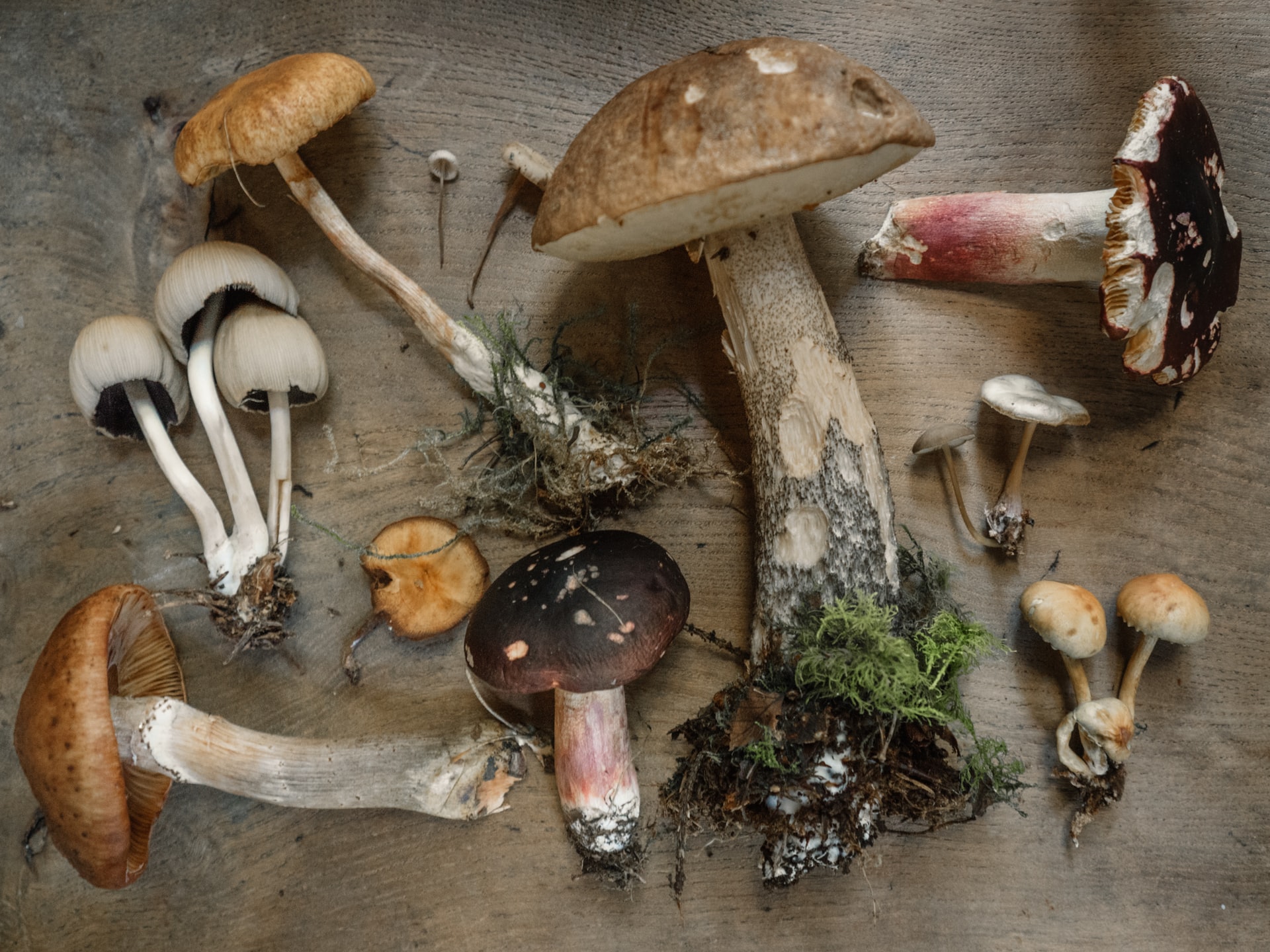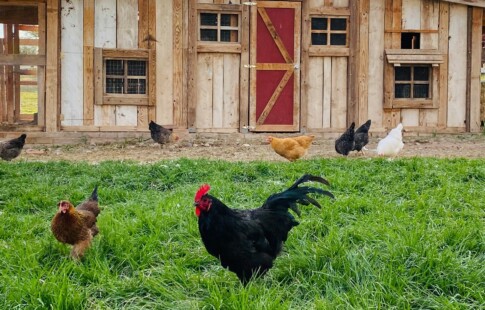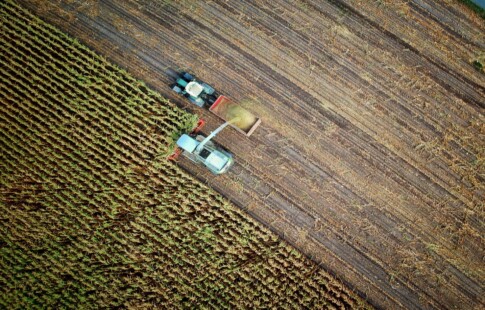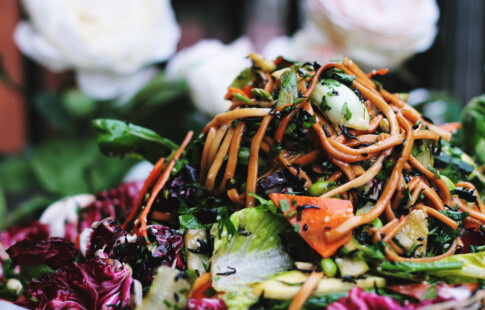
Basics of Mushroom Foraging: 7 Steps for Beginners
We are reader-supported. When you buy through links on our site, we may earn affiliate commission.
Mushroom foraging is a fun way to explore nature and learn more about your local environment. Many mushroom-enthusiasts enjoy the process of finding and identifying varieties even if they don’t find anything edible. It’s like a treasure hunt that never ends, as there are over 10,000 known species worldwide.
If you’re never gone foraging before, the process may seem daunting. While it’s not possible to identify every mushroom you find, you will learn something every time you go looking for these interesting fungi. Here are seven tips to prepare you for your first foraging venture.
Look at Mushroom Anatomy
A mushroom is the fruiting body of a fungus. Most mushrooms have a cap, spore-bearing surface and stem. Many mushrooms also have a veil that protects the spores or the entire mushroom when it’s small. Spores can be stored in gills, false gills, pores or spines.
To properly identify a mushroom, you’ll need to know as many details about it as possible. Look at color, texture and shape. You can learn about a mushroom’s spores by making a spore print, letting the mushroom send spores out on a piece of paper. Mushrooms with a cap at the base initially had a universal veil, while a ring on the stem means a partial veil.
Consult Time and Place
Like fruits and vegetables, mushrooms don’t grow all the time. The hidden part of a fungus is called mycelium and it grows underground. After rain or at the right time of year, mushrooms will grow from the mycelium and send out spores to reproduce. The best time of year for mushroom hunting depends on your area.
Some mushrooms may abound where you live while others are never found there. It’s important to know a mushroom’s range so you can better identify the ones you find. If you want a specific type of mushroom – say a chanterelle – you should learn about where it grows, when it grows and what weather it likes before you look for it.
Take Gear With You
Before you head into the woods, put together a mushroom hunting kit. You’ll need a basket and several breathable bags – something like cotton or mesh. If you put mushrooms in plastic bags, they’ll turn into mush before you get home. Breathable bags also let you scatter spores and benefit the forest as you travel.
Because you’ll probably be exploring off the beaten path, it’s important to take a whistle and navigational gear so you don’t get lost. Make sure you have a map and compass and know how to use them. You may also want a digging tool, knife and brush for harvesting. Try to clean as much dirt off your mushrooms as possible while you’re still in the woods.
Harvest Your Fungi
Once you’ve found a mushroom you’re interested in, you can go through a variety of tests to identify it. Take a photo and write down as much information as you can about the color, shape, size and texture. You should fully unearth your mushroom to examine the base and the roots. Try to work with mature mushrooms that are fully open.
Now things can get a bit messy. Try scratching, breaking and bruising the mushroom to see what happens. Smell it and pay attention to texture. Put each mushroom in a separate paper bag along with a notecard full of your observations. You can layer the mushroom cap and piece of paper to create a spore print on the way home.
Observe the Environment
Before you leave, pay attention to where you found the mushroom. Was it growing out of the soil or from old wood? Did it grow in a group or by itself? You should also pay attention to the type of soil – some mushrooms predominantly grow in sandy soil. Other mushrooms only grow under certain trees or in certain conditions.
Take note of these observations as well. If you’ve found a favorite edible mushroom, you’ll be able to look for these conditions later. The environment has a lot to do with finding mushrooms and finding a good spot can take a long time. You should respect other mushroom foragers’ favorite spots and think twice before sharing yours.
Check Reference Guides
Next, you can compare your notes with the information in a mushroom reference guide. There are many different kinds of mushroom books and they can all be helpful. However, it’s best for beginners to start with a book that’s been recently published and is zoned into their local area. That way, your information will be as accurate and useful as possible.
Once you learn more about mushrooms, you can branch out. There are entire books written on specific kinds of mushrooms, ranging from edible varieties to very weird fungi. Reference guides are an essential part of the learning process and it’s usually better to have several to confidently identify your mushrooms.
Consider Your Goal
For every edible mushroom, there are several potentially toxic look-a-likes. If you want to harvest edible mushrooms, learn one at a time so you can absorb as much information about these look-a-likes as possible. Before you eat anything, you must be SURE that it’s not toxic or deadly. Some mushrooms do not have an antidote and they can kill you.
However, you don’t have to eat mushrooms to forage for them. Many people just enjoy learning about the natural environment and finding new fungi they’ve never seen before. Think about why you want to go mushroom foraging and have fun with the process. You don’t have anything to prove!
Mushrooms, Here You Come!
Foraging for mushrooms is a lot of fun and a great way to appreciate nature. Mushrooms play a powerful role in forest ecosystems, but much of their work is unrecognized because it’s invisible. You can learn more about your environment by putting together some supplies and looking for mushrooms near you.
If you’ve never foraged before, start by learning about mushroom anatomy. Then, find out more about your area – where and when mushrooms are likely to grow. Get some basic gear and pair your observation skills with a reference guide to identify what you find. Whyever you choose to forage, don’t forget to have fun!
Share on
Like what you read? Join other Environment.co readers!
Get the latest updates on our planet by subscribing to the Environment.co newsletter!
About the author
Steve Russell
Steve is the Managing Editor of Environment.co and regularly contributes articles related to wildlife, biodiversity, and recycling. His passions include wildlife photography and bird watching.





